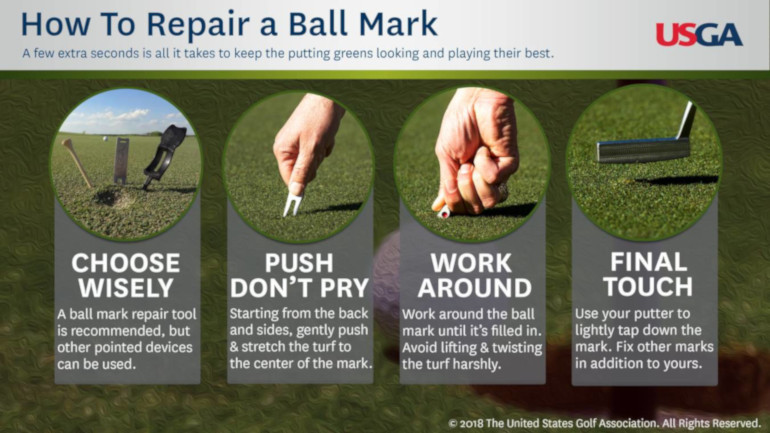Golf is a beautiful game played on prestigious landscapes looked after by hardworking men and women across the globe, so what can we do as players to make groundskeepers’ jobs a little more pleasant?

A recent tweet from Dakota Dunes Golf Links’ Superintendent Tyler McComas showing a pair of carts parked on the grass next to a tee box at his course had the province’s golf community talking, and not in a positive manner. Golf Saskatchewan decided to seek answers regarding course etiquette. The Legends Golf Club in Warman Superintendent Matt Choquette said when it comes to your cart, common sense says use the paths.
“Definitely stay on the cart path as much as possible, cart traffic is a lot more damaging than people think,” Choquette said. “It causes a lot of compaction on the turf, so that comes with a lot of its own issues. It dries out the grass, causes weeds to grow, it makes growing grass a lot more difficult so more of the undesirable stuff creeps in.”
When asked about the picture on Twitter and giving the players the benefit of the doubt that they were allowing either the beverage cart or maintenance staff the right of way, Choquette said it’s better to let their equipment travel around you. Many courses also have the 90-degree rule in effect on several holes or all of them. Choquette said for the most part people use the rules when not pushed to.
“I think a lot of people use the 90-degree everyday, they will drive to their ball or their buddy’s ball and then get back to the path. It’s the guys that get off the path as soon as possible and drive all the way up to the green when they don’t have to. That’s the frustrating part,” he said.
Replacing divots is also an important part of keeping a course in top notch condition. Most courses will have sand buckets to fill divots on short hole tee boxes and provide sand buckets or shakers on their carts or push carts. Choquette said if you do take out a big chunk of sod on a fairway during your approach take the time to put it back.
“If it’s a good divot and it’s still fully intact I’d prefer that to go back, step it down and it usually regrows quite easily, but when it comes out in three, four, or 100 pieces, definitely use the sand because that’s not going to regrow. If it’s one nice big divot, replace it and carry on,” he said.
By far the most irritating habit Choquette and his staff see is ball marks not repaired on greens. He said his crew repairs upwards of 200 after a busy day at The Legends. Not only does he encourage players taking the time to fix their marks but doing it properly.

“Don’t twist it or lift it, push the dirt in around it, go from the four sides and mend it back together” he explained. “If you lift it you are bringing bare dirt to the top, if you twist it you are ripping the roots, then tap it down with your putter. I’d say that’s my biggest issue, people not fixing ball marks.”
Raking bunkers is another tip Choquette provided for course care. He said there is no secret to raking properly, he said making the sand as flat as possible for the next group is the main focus. He also suggested that players making a shot from the bunker exact at flatter areas rather than stomping up a steep slope.
Safety also comes into play when you are practicing etiquette especially for staff. Crews are constantly working on the course to make it more enjoyable and they want to work with users to make everything flow smoothly. Morning golfers will experience maintenance traffic more often but Choquette said his staff have instructions to avoid any confusion.
“When my staff see someone they are supposed to get out of the way and wave them, so they know they are watching. That’s what we also expect from the golfers too, is to make sure that we are aware they are hitting so we can be paying attention and move. There are definitely people that don’t do that and kind of just go but most people are pretty good, they will wait for the staff to clear,” he said.
Most clubs have rules for the betterment of their particular course, Choquette said follow the rules, practice the provided tips and you and your course will be better for it.



